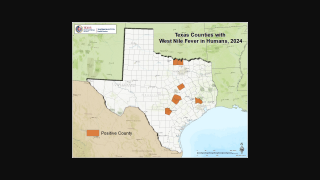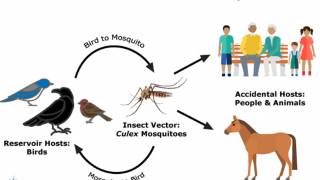West Nile Virus Enjoys the Summer Months

Since the summer of 1999, West Nile virus has quietly spread to most states in the USA.
Fortunately, most people infected with West Nile virus do not have symptoms.
But, about 20 percent of people who are infected develop a fever and other symptoms.
And, less than 1 percent of infected people develop a serious illness.
Unfortunately, there are no vaccines to prevent or medications to treat WNV infections.
Since 1999, more than 46,068 West Nile virus (WNV) cases have been reported, with 2,018 deaths.
As of July 10th, 2018, a total of 30 states have reported WNV infections in people, birds, or mosquitoes.
Overall, 14 cases of West Nile virus disease in people have been reported to the US Centers for Disease Control and Prevention (CDC).
Human WNV infections have been reported to ArboNET from the following states: Alabama, California, New York, North Dakota, Oklahoma, and South Dakota.
Of these cases, 7 (50%) were classified as neuroinvasive diseases, such as meningitis or encephalitis, and 7 (50%) were classified as non-neuroinvasive disease.
Additionally, as of mid-July 2018, 19 human cases have been reported in EU/EEA by Greece (12), Italy (4), Romania (2) and Hungary (1).
And, 29 human cases have been reported in neighboring EU countries, all in Serbia.
Additionally, only individuals who can present recent negative results of their nucleic acid test are allowed to donate blood within the EU over the next 28 days.
One of the best strategies for eliminating mosquito-borne diseases is to reduce populations of the mosquitoes that spread them.
The 3 most common mosquitoes in the USA:
- Aedes aegypti Mosquitoes: The Aedes aegypti mosquito can carry and spread viruses and has been found in more than 20 states. Unlike other mosquito species, Aedes aegypti mosquitoes bite during the day and night.
- Culex Mosquitoes: These mosquitoes are in every state and can carry and spread West Nile virus. They are most common at dusk and dawn.
- Anopheles Mosquitoes: In addition to spreading Malaria, Anopheles mosquitoes can transmit dog heartworm and other viruses. They have been found in every state and are most active at dusk and dawn.
Despite the development of effective WNV vaccines for horses, several human vaccine candidates have been tested in preclinical studies and to date, there have been eight clinical trials, including clinical trial NCT02337868.
The Oregon Health and Science research team, led by Mark Slifka, Ph.D., is developing a WNV inactivated vaccine candidate HydroVax-001. The clinical trials study aims to recruit up to 50 men and women, for approximately 25 months at a single site and subject participation duration is approximately 14 months.
Additional WNV vaccine candidate information can be found on this NIH page.
Although mass vaccination is unlikely to be cost-effective, implementation of a targeted vaccine program may be feasible if a safe and effective vaccine can be brought to market, said previous researchers.
Our Trust Standards: Medical Advisory Committee
- Weekly updates: 2018 West Nile fever transmission season
- Final Cumulative Maps & Data for 1999–2016
- Biological and phylogenetic characteristics of West African lineages of West Nile virus
- Phase 1 Trial of Inactivated West Nile Virus Vaccine
- NIH-funded vaccine for West Nile virus enters human clinical trials
- West Nile Virus Reported in Chicago, But Don’t Blame Mosquitoes

























